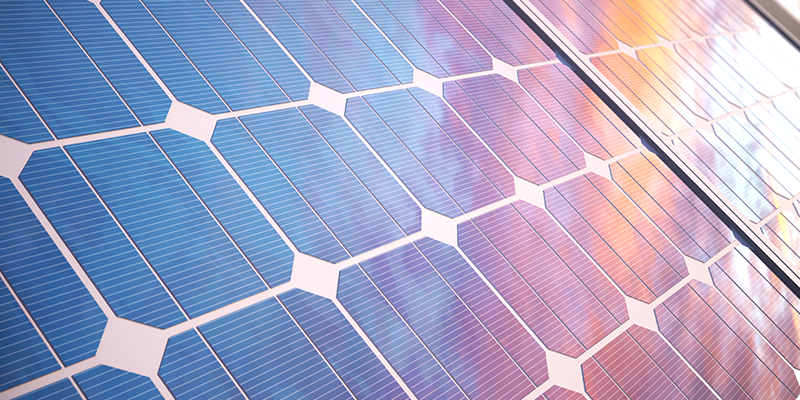Opportunities to support renewable energy in Maine are plentiful and allow you to make a meaningful and positive impact on the environment. With these opportunities also come choices, which at times can be confusing and overwhelming. Comparing features like cost, environmental impact, and billing methods may help you better understand the program differences and make an informed choice.
To assist you in making your clean energy choice, we’ve offered a comparative analysis of Maine Green Power and Community Solar programs highlighting the features that are most important to customers.
Maine Green Power

Maine Green Power is sponsored by the Maine Public Utility Commission and is available to customers of Maine’s two investor-owned utilities, CMP and Versant Power. When you sign up for Maine Green Power, you’ll pay a small additional fee on your utility bill each month to support Maine-made renewable energy. Those funds are used to purchase renewable energy certificates (RECs) from renewable energy facilities right here in Maine.
RECs are an important tracking mechanism and ensure that electricity from facilities like wind farms, solar farms, or hydro plants is delivered to the regional power system. When enrolled in Maine Green Power, the RECs purchased by the program are retired on your behalf, which means you can claim the environmental benefits from the renewable energy that you supported financially. We publish an Annual Report showing the exact facilities supported and the number of RECs purchased and retired through this program.
Electricity from these renewable energy facilities reduces the need for electricity generated from non-renewable sources like fossil fuels, creating measurable environmental benefits. You purchase “blocks” to match your home or business’s consumption and those funds are used to support the generation of renewable energy in Maine.
This program works as an add-on to your electricity bill, whether you are a CMP or Versant customer. There is no interruption in service, no change to your electricity supply, and you can cancel at any time.
Community Solar

Starting in 2019, a new type of solar development in Maine, referred to as Community Solar, offers customers the opportunity to share in the costs and benefits of renewable energy.
Community Solar allows you to support the development of solar projects in Maine, in exchange for credits, which result in a discount on your CMP or Versant bill.
Under this program, customers who choose to subscribe receive kilowatt-hour (kWh) credits on their electric utility bill that reduce the amount of the payment owed to their electricity provider. There is typically an additional energy delivery service charge and at times, a longer-term contract is required.
The RECs generated from the solar facility are either held by the owner of the facility or more commonly are sold on the open REC market, analogous to the stock market, as a means to help finance the solar development. Whether the RECs are sold or not is determined by your agreement with the solar developer or the administrator of the Community Solar program. Whoever owns the RECs holds the rights to the environmental benefits of the renewable energy that’s been generated, e.g. avoided emissions or a reduced carbon footprint. For example, if an energy provider needs to contract electricity from a coal plant to meet the energy demands of their customers, it may purchase the RECs from a solar generator, and claim the environmental benefits of the renewable attributes associated with the RECs.
In the case of Maine’s Community Solar facilities, we are not aware of any facility that retires RECs on behalf of its solar subscribers, so the subscribers cannot claim any environmental benefits from participating in the program.
Which renewable energy program is right for you?
| Maine Green Power | Community Solar | |
|---|---|---|
| Cost | Additional fixed monthly cost starting at $4.95/month (you choose the level of participation) | Varies, but could be up to 15% total energy bill savings |
| Billing | Additional line item on your existing CMP or Versant utility bill – no extra bills or hidden fees. | Participants receive two separate bills – one from either CMP or Versant with credits for solar energy, and one from the community solar provider. |
| Term length | No commitment or contract – cancel anytime | Could be a minimum contract length |
| Delivery Charge | No extra delivery charges | Includes extra delivery charges |
| REC retirement | RECs are retired on your behalf, so you can claim environmental benefits. | RECs are not retired on your behalf, so environmental benefits are not yours to claim. |
| Sponsored by MPUC | Yes | No |
Participation
Both Community Solar and Maine Green Power are beneficial because they both support demand for and generation of renewable energy, just in different ways. Customers looking for the best of both worlds could actually enroll in both programs and get the bill savings of Community Solar with the environmental benefits of the RECs with Maine Green Power.
Whichever path to renewable energy you choose, you’ll be contributing to the important goal of reducing your environmental impact and preserving the planet for generations to come.
If you’d like to dive even deeper, here are some additional resources:
- Why Maine Green Power
- Maine.gov: Community Solar
- Recording of Topsham Energy Committee’s Solar Options webinar – April 28, 2022 featuring speakers from Revision Energy, PowerMarkets, and Maine Green Power














